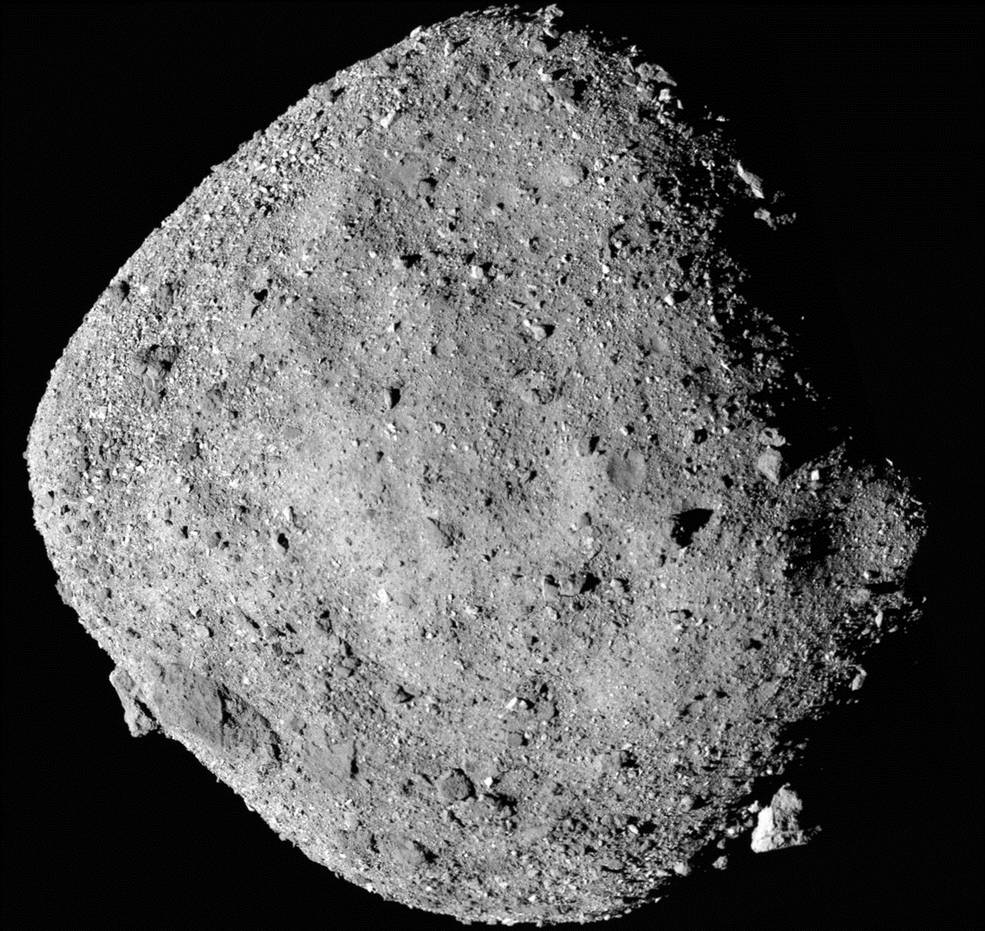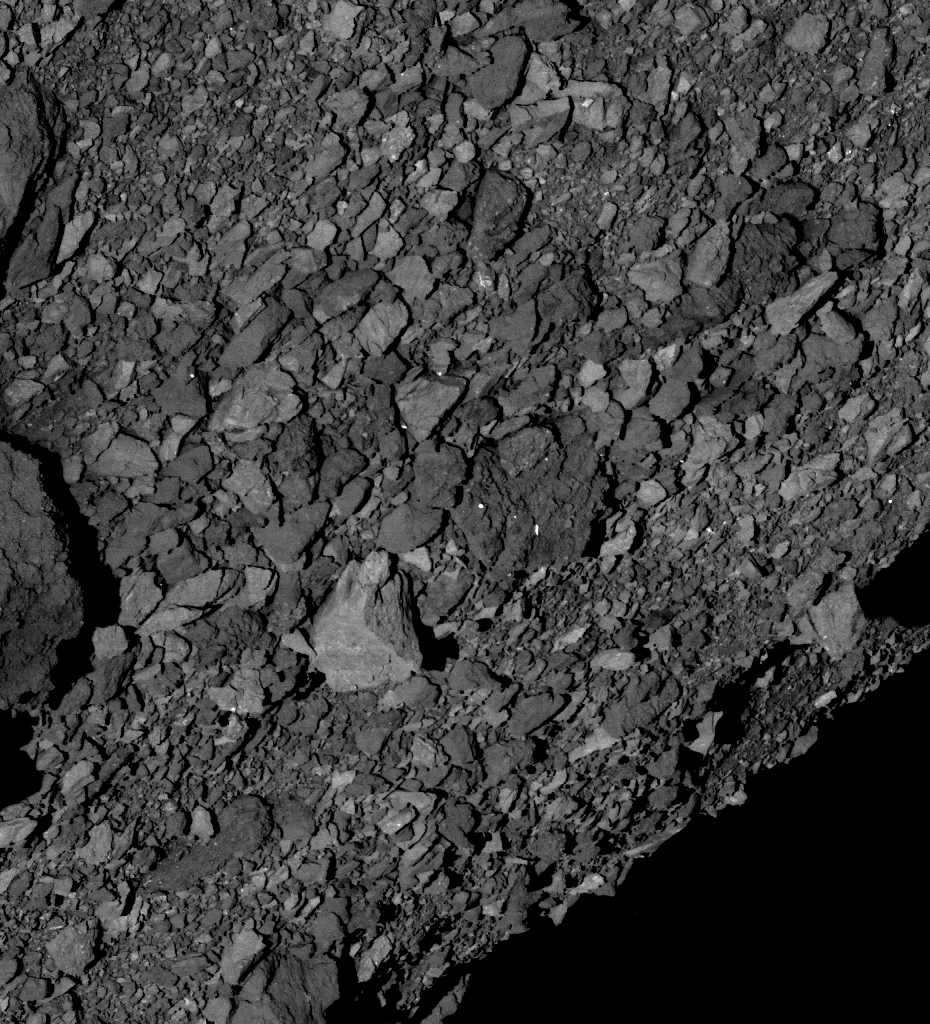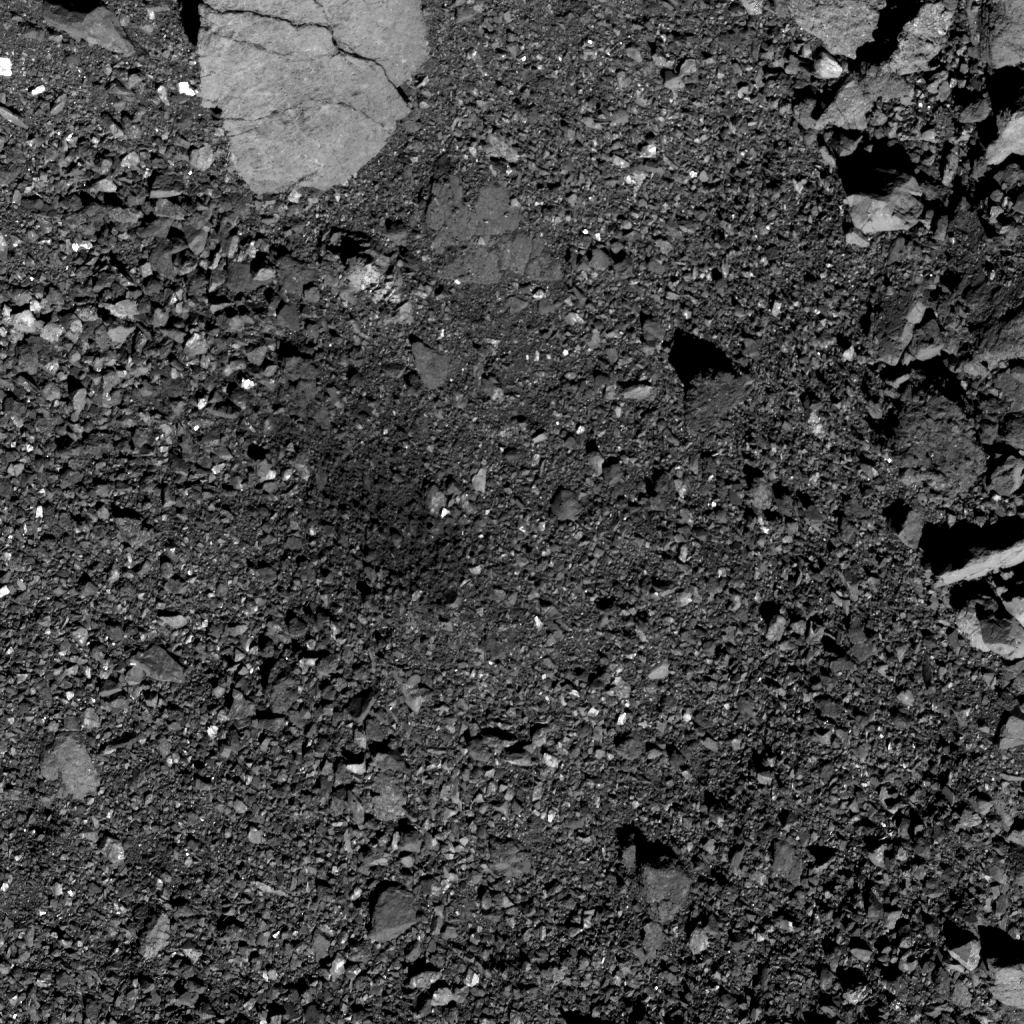NASA has chosen the sampling site for its OSIRIS-REx spacecraft. After narrowing it down to four potential sites and examining them in detail, they've settled on one location. Their choice? Nightingale.
OSIRIS-REx has been at asteroid Bennu for a year, taking detailed images of its entire surface. While the spacecraft has other mission objectives, the sample return portion of its mission is paramount. Advanced spacecraft like OSIRIS-REx can gather detailed data on the asteroid while there, but it's back on Earth, in specialized laboratories, where an in-depth sample analysis can be performed.
"Of the four candidates, site Nightingale best meets these criteria and, ultimately, best ensures mission success." Dante Lauretta, OSIRIS-REx principal investigator.
But before it can return one, it has to collect one, and finding a safe spot to collect one on Bennu 's rock and boulder-strewn surface is a challenge. When OSIRIS-REx (Origins, Spectral Interpretation, Resource Identification, Security, Regolith Explorer) arrived at Bennu, mission personnel found that the asteroid was rougher than expected. While there's plenty of material suitable for sampling—fine-grained material smaller than 2.5 cm (1 inch)—the rocky surface of the asteroid makes it tricky to access.
NASA narrowed their choice down to four sites, each of which provided the required fine-grained material, while posing a manageable hazard to the spacecraft itself. They were all named after birds: Sandpiper, Osprey, Kingfisher, and the confirmed site, Nightingale.
"After thoroughly evaluating all four candidate sites, we made our final decision based on which site has the greatest amount of fine-grained material and how easily the spacecraft can access that material while keeping the spacecraft safe," said Dante Lauretta, OSIRIS-REx principal investigator at the University of Arizona in Tucson. "Of the four candidates, site Nightingale best meets these criteria and, ultimately, best ensures mission success."
In a previous article on Universe Today, we highlighted the four potential sampling sites. The difficulty mission operators face is that the spacecraft was designed to land on a beach-like area with pond-like deposits of finer material suitable for sampling. But Bennu's rocky nature complicated the choice.
Now, however, the choice has been made.
Nightingale is located in a crater in the north of the asteroid. The crater is 140 meters (460 ft.) wide. Images show that Nightingale is pretty smooth, and the site is so far north that the temperature is lower, meaning the regolith there is well-preserved. Also, the crater is young and the material is freshly-exposed, making it ideal for collecting a pristine sample. A more pristine sample has seen less space-weathering, and will hold more clues to Bennu's history.
When the OSIRIS-REx sample return mission was being planned, NASA envisioned a site with a diameter of 50 meters (164 ft.) Nightingale's crater is bigger than that, but there are still risks. The size of the safe touchdown area in the crater is only about 16 meters (52 ft.) in diameter. That's only one tenth the size outlined in the mission plan.
So OSIRIS-REx will need to target its sampling site very accurately, including working its way around a large boulder that could be in the way when the spacecraft departs the sampling site. NASA's been working on that, developing a collision-avoidance system for OSIRIS-REx.
https://gfycat.com/fixedofficialgreyhounddog Part of OSIRIS-REx's work at Bennu involved creating this 3D map of the asteroid using the OSIRIS-REx Laser Altimeter (OLA.) Peaks are red, while blues are areas about 60 meters (200 ft.) lower. Image Credit: NASA/University of Arizona/CSA/York/MDA
When OSIRIS-REx does eventually take a sample, it will do so autonomously. The spacecraft has a Natural Feature Tracking (NFT) system that uses images of the asteroid to guide itself to the surface. By comparing its onboard images of Bennu with what its cameras are seeing in real time, it can avoid collisions.
But Bennus's unexpected inhospitability means that system will face some challenges. It has an automatic fail-safe that will abort the sampling if an obstacle is too close. To prevent that from happening, mission operators will be working overtime. In fact, the team almost expects the spacecraft to waive its first attempt when it approaches the building-sized boulders that litter the surface of the asteroid.
NASA has chosen a back-up sampling site, too. Osprey will fill that role.
OSIRIS-REx can perform multiple sampling attempts if necessary. If sample-collecting doesn't work at Nightingale, the attempt itself might disturb the site too much, rendering it unsuitable for a second attempt. If the NFT system aborts the attempt and waves the spacecraft off, the thrusters could disturb the site. In that case, the spacecraft will attempt another sample collection at Osprey.
"Bennu has challenged OSIRIS-REx with extraordinarily rugged terrain," said Rich Burns, OSIRIS-REx project manager at NASA's Goddard Space Flight Center. "The team has adapted by employing a more accurate, though more complex, optical navigation technique to be able to get into these small areas. We'll also arm OSIRIS-REx with the capability to recognize if it is on course to touch a hazard within or adjacent to the site and wave-off before that happens."
Now that NASA has settled on primary and backup sites for sample collection, anticipation is growing. But there's still more work to be done before the sample collection can take place. In January, OSIRIS-REx will begin more reconnaissance flights of both Nightingale and Osprey, and they will wrap up in the Spring. Once recon is completed, the spacecraft will rehearse for its first sample collection attempt, scheduled in August.
If all goes well, OSIRIS-REx will depart Bennu in 2021, and the sample will be returned to Earth in September 2023.
 Universe Today
Universe Today




